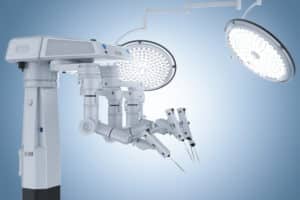IBM Watson Health: The Future of Surgery with Robots
by Adam Pease
Recently, IBM Watson Health has released more information about its partnership with Merge Healthcare, which aims to leverage AI-based platforms to transform medical processes. At the core of this solution is computer vision, which has the power to make some processes more efficient, and make some fully autonomous. In this blog, I review the state of IBM’s research and consider how far we are from a medical world that is driven by computer vision.
Robotics and Precision Surgery
One of the major points IBM underscored when discussing its capabilities was the speed of image analysis. Computer vision-based AI is now capable of analyzing images in seconds and diagnostically classifying them in minutes. This mean that the process of analyzing MRIs, x-rays, or even tissue within the body during the course of a surgery could be made far more efficient.
One focus of IBM Watson Health’s research is developing better techniques for screening and treating cancer more quickly. The team is working on a series of autonomous medical robots, powered by deep learning algorithms, which can rapidly analyze tissue and provide histopathology in real-time.
Computer Vision and Surgical Robotics
IBM’s push to develop new surgical robots will push the boundaries of medical diagnostics and procedures. In the case of computer vision and autonomous procedures, there are many reasons that such technologies could flourish in a remote work era, so long as they were vetted for safety. In a world powered by surgical robots, where doctors can oversee procedures at a distance, patients in rural or hard-to-reach areas could receive the same care as patients in high-quality hospitals.
Safety and Adoption
Similarly, fields such as battlefield medicine, first response, and even space travel would be transformed by the deployment of autonomous, scalable teams of medical robots. And while there are obvious safety concerns involved with any autonomous system in a high-stakes context such as medicine, there are also safety advantages conferred by autonomous systems.
With computer vision, surgical robots can detect abnormalities, vulnerable areas, and help establish granular patient profiles with speed. Robots have the power to streamline surgery, and to reduce pressure on the surgeon by mitigating malpractice concerns and empowering them with an observational role. The hybrid workplace is coming to medicine—equipped with digital labor in the form of robots, surgeons can take a more managerial role, supervising decisions and intervening at critical points.
Bottom Line
I have written elsewhere about how computer vision is coming of age across a variety of verticals. Healthcare is only one example of this emerging technology’s transformative impact. IBM’s investment in autonomous systems powered by deep learning is indicative of a broader investment in computer vision across the enterprise. We are not yet in the world of autonomous surgery and self-driving cars, but it’s where we are headed.


Have a Comment on this?